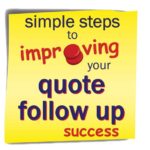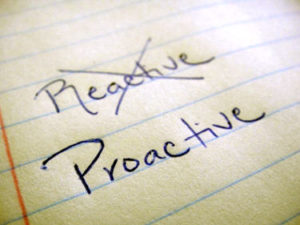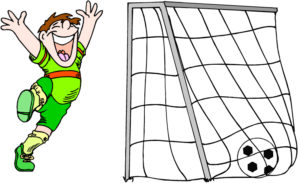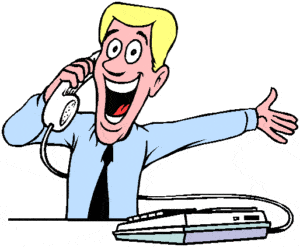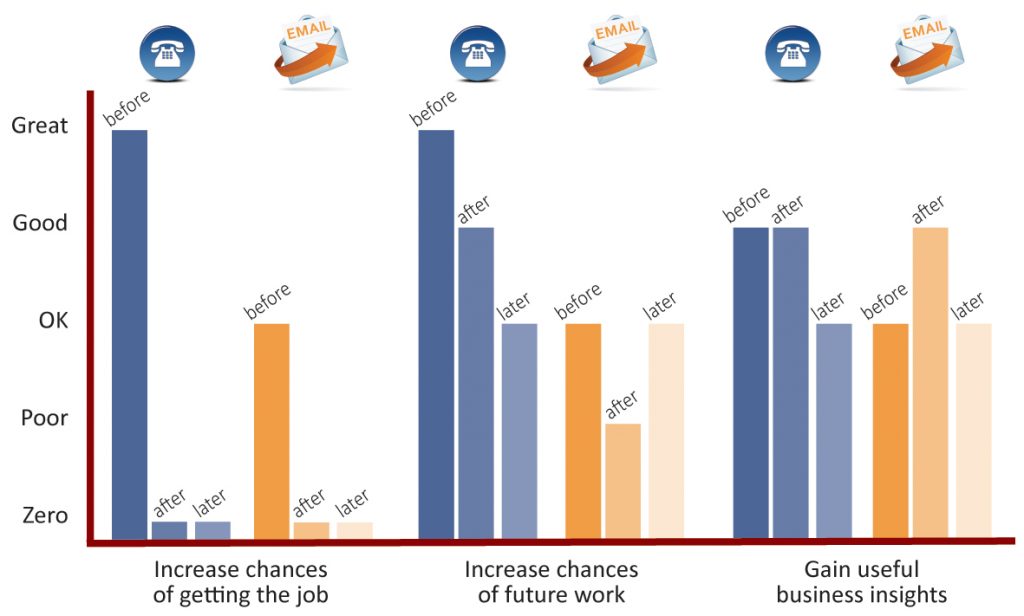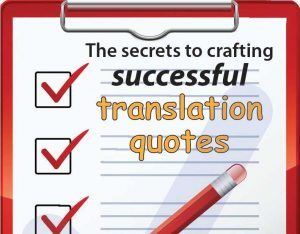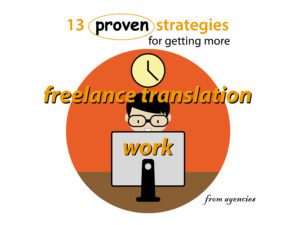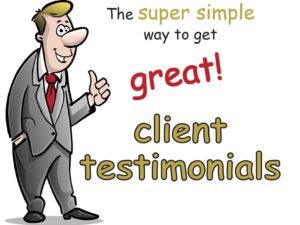You’re probably here looking for a brilliant quote follow up e-mail template that’ll magically convert more of your quotes into jobs, right?
Well, our sample e-mails are field tested and as good as any for that.
But let me let you into a little secret:
Whilst an “e-mail and hope” approach is better than nothing and will bring some success …
… when you fully appreciate the huge potential rewards quote follow up can bring, the limitations of this approach become pretty obvious.
So,
We’re also going to give you a much smarter way to tackle quote follow up – one we’ve found to be simply light years more successful.
In fact, it’s so much more effective we’re sure that if you follow these guidelines you’ll end up earning more, it’s that simple.
 Quick navigation:
Quick navigation:
- The big rewards to be gained from quote follow up
- Our different approach – what we’re setting out to achieve
- The ideal timing that makes all the difference
- Why phoning is generally way better than e-mail
- The subtle mindset shift that works a treat
- Our sample quote follow up e-mail templates and wording
Note: This article has in mind quotes for relatively straight forward, standard projects rather than those requiring on-going negotiation or refinement. More complex and larger projects may call for a different approach.
We also sometimes refer specifically to translation quote follow up, but the general principles will apply to all fields.
Before we delve into this smarter approach though, we’d better answer the obvious question …
Why bother doing quote follow up at all?
What are these “big rewards” we say are there to be reaped through a smarter approach to quote follow up?
Simple answer, you’ll get more work:
The 3 ways astute quote follow up can bring you more work
1. You’ll win more jobs you quote for than you otherwise would
Scenario 1
Sometimes it’s just straight out good timing – you follow up right when your client is about to make a decision.
Your quote looks good, so they say yes. Done.
Scenario 2
Other times clients will have deferred a decision to later. You follow up and they just find it quicker and easier to say yes to your quote now than have to weigh everything up later.
Clients who are particularly busy will often do this. They welcome anything that saves them time or makes their lives easier.
Scenario 3
And other times you’ll get to engage with your client, and that engagement will tip the scales in your favour. Especially if your client is new to translation (or your field) and you help them understand the process and answer their questions.
They can feel they owe you something because you’ve been so helpful, so you get the job.
2. Establishing a relationship with your client can directly lead to future jobs
Well executed quote follow up shows your client you’re:
- keen to get their business
- professional in your business dealings
- proactive and respond promptly
And people who are keen, professional and proactive are highly likely to do a good job and give good service, right?
So straight away you’re impressing in two of the key areas that influence who clients select as their service providers – see our translation quotes article for more on this.
Reinforce these impressions over time and continue to engage in a professional and helpful manner, and you can gain a clear edge for future work.
Here’s why:
- your client will feel they know you somewhat, and we all prefer to deal with people we know and have a positive image about;
- some clients will want to give you their next job because of the trouble you’ve gone to
- clients can perceive there’s less risk in selecting you over others. You’ve given every indication you’ll do a good job and give good service, whereas that’s still an unknown with others.
The added bonus
It’s not just work from that client or contact person you can get. You can also find out about upcoming projects with other people or divisions in the organisation, and even other companies they deal with.
Play your cards right and you can get the inside running for this work too.
Some clients expect you to follow up. They only want to deal with people who show they’re keen to get the job, because they see them as more likely to give good service and provide better quality.
If you don’t follow up with these people you not only won’t get the job, but they probably won’t ask you to quote again in future.
3. You can get key information through quote follow up that can help you improve your business
A smart follow up process can net you key insights into how clients perceive your business. And you can use these to improve your quotes, or tweak your service offering.
Your client’s response might highlight an area that wasn’t particularly clear in your quote, for example. Or other information it would be smart for you to include.
And not just in your quotes, but potentially on your website and marketing materials as well.
And if you missed out on the job, it can be invaluable to find out why.
For example, consistently missing out on price may prompt you to review your charges. Conversely, getting everything you quote for might indicate an increase is in order.
Similarly, missing out on time frame may prompt you to quote a shorter period in future, or add some of the tried and true wording we suggest in our translation quote article (No. 7).
And what if your client feedback is that someone else included additional services in their offer? I’d sure want to know what those services were.
If it’s just the client’s perception and the “extra services” are actually part and parcel of what everyone provides, I’d want to educate the client on that.
More importantly, your competitor gained an advantage through that approach. So you may want to follow suit. Or tweak your message or wording to make it clear you also provide that service.
Approached in the right way, it’s surprising how much some clients will tell you. Many feel if you’ve gone to the trouble of providing a quote and then following up, the least they can do is give you some information.
The trick is to use that info to make your quotes, marketing, and even your service offering, more compelling.
Back to top
Which leads us to …
The smart approach to quote follow up that your competitors probably won’t be using
Given all there is to gain, we think a smart approach to quote follow up is to have 3 separate objectives:
Goal 1: Get the job if you can
Goal 2: Maximise your chances of getting future work
Goal 3: Find out what the client thinks of your business
So it’s not just about getting the job you quoted for, is it.
The big rewards come when you adopt a broader perspective, take a longer view.
Quote follow up should be more about building your business than getting a particular job.
And really, isn’t the second goal more important than the first? Far better to gain a good long term client than a one-off job, right?
And goal three might actually be the most important of all, especially if you’re just starting out and/or are still developing your business systems.
To my mind, hitting any one of these goals has to be a success. Hit 2 and you’re smoking!
Very few people see quote follow up in this light, so adopt this approach and you’re very likely to gain a competitive advantage in your field.
1. It reduces, or eliminates, the fear of failure (that stops many people in their tracks).
If you get the job, great. But if you don’t, that isn’t failure or rejection. There are still two other, perhaps bigger, fish to fry.
2. Your clients won’t feel you’re pressuring them
Phone a client and they’ll be half expecting you to put the screws on to get the job. Show you’re just as interested in seeing what you could have done better, and are quite happy to discuss broader matters and provide free information (goal 2), and they’ll relax.
And guess what.
This could actually make them more likely to assign you the project – because you’ve shown how easy you are to deal with. Not bad, eh.
It also follows from this broader perspective that:
You should follow up on every quote.
If you only view quote follow up as being about getting the project you’ve quoted for (our goal 1), you’re probably not going to bother on those smaller or less profitable or more awkward jobs.
But those quotes are just as important and relevant for your two other objectives. And potentially even more so if other providers decide not to follow up, or worse don’t even bother quoting.
Invest the time in those less appealing quotes/jobs and you can really get alongside your client. You’ll differentiate yourself from the competition, and could be well on your way to establishing a profitable new business relationship.
Gaining a good long term client would make that effort more than worthwhile, wouldn’t it!
Back to top
The ideal timing that will automatically bring you more quote follow up success
This is the when of quote follow up.
Our first objective is to get the job we’ve quoted for, and the most opportune time to follow up for that is:
right when the client is ready to make a decision.
But how do you know when that will be? Well …
1. Occasionally they’ll tell you
They’ll say “a decision will be made on XX”. So contact them that morning or the day before.
2. Sometimes it’ll be pretty obvious
If the project deadline is tight or you’re told it’s urgent, then you know they’ll be deciding pronto.
So contact them as soon as they’ve had a chance to digest your quote. That might be in 5 minutes, or an hour.
And sometimes you’ll be asked to get your quote in by a certain time or day, say by COB Tuesday. So contact them late that afternoon, or early next morning before a decision is likely to have been taken.
3. But often you just won’t know
If there’s nothing to give you a steer, you just have to take a guess.
Our suggestion is to always assume they’ll act promptly. So follow up the next day, or maybe even later the same day if your quote was sent in the morning.
We always favour following up sooner rather than later. This definitely increases your chances of getting the job, as discussed above.
And if it proves to be too early, generally nothing’s lost. You can ask the client when they expect to make a decision so you can diary it for then.
More generally, this portrays you as being systematic and keen. Which could keep you front of mind and give you an edge for this and future jobs – keen, organised people are seen as likely to give good service.
Sometimes a decision might take weeks. Your quote might be part of a larger or more complex process, or the organisation might just have a ponderous or complex decision making process.
In this case you just need to pick a date and slot it in for follow up at that time.
And if there’s still no indication of when they’ll decide, try again later. Perhaps in a week or fortnight, whatever seems best. And once again after that if needed.
The idea is to stay front of mind without coming across as pushy.
The how of quote follow up
Here are the two key, time-tested strategies we recommend to make your quote follow up more effective:
1. Use the phone wherever possible
2. Adopt an assumptive approach
The huge advantage choosing to follow up by phone will give you
Here’s the crucial difference between phoning and e-mail for quote follow up:
When you talk directly with your clients you’re getting them to actively engage with you on a personal level.
Getting them to read a follow up e-mail achieves none of that. In fact, it’s pretty much the opposite – passive and impersonal, no meaningful engagement.
Why is this such a big deal?
Because when we’re actively and personally engaged with another person, the impressions and perceptions gained from that interaction have much greater impact and are longer lasting.
And this is huge (it’s essentially what quote follow up is all about), because:
The impressions and perceptions your client gains of you are likely to be a major factor in whether he selects you as his provider.
After all, if he hasn’t worked with you before and doesn’t yet know you, they could be pretty much all he has to go on.
For example, here are 2 specific gains easily achieved by phoning but unlikely by e-mail when following up a quote:
1. You’ll stand out from the crowd, as most others won’t phone.
That alone means your call will likely stick in your client’s memory.
2. You can show you’re a pleasant person to deal with.
We can sometimes forget that business essentially involves dealings between individuals. And we all prefer to deal with people we like and who we find easy to work with.
So you want to do all you can to make a tangible, positive impression on your client. And you’ll achieve that infinitely better through the direct personal engagement of a phone call than you ever can ever do through a quote follow up e-mail.
Providing you know your stuff, the benefits will generally flow naturally from a conversation just by being pleasant, helpful and courteous. How good is that!
Combining this insight with what we’ve said about timing will give us this:
The effect of timing and method on quote follow up success
Conclusion
E-mail isn’t particularly effective for achieving our quote follow up goals (generally poor to average) and phoning is far superior (generally good to great).
But …
3 scenarios when it might just be better to follow up by e-mail though
1. When you can’t get to the decision maker
Sometimes you’ll be dealing with an admin person who won’t have any input into which quote is accepted or provider chosen. They’re just gathering the quotes for someone more senior to consider.
Phoning is unlikely to gain much traction here, even if you get on like a house on fire.
An e-mail reinforcing your service, professionalism and why you’re the ideal person for the job is more likely to be sent up the line and so hit the mark.
2. If your contact person’s personality suggests it
Some people resent phone calls in general, seeing them as a distraction or interruption.
Others will get frustrated at a quote follow up phone call because they see you as wasting their time – everything has already been put in writing so they believe they should just be left alone to decide.
Following up your quote by e-mail is better in these cases, but how do you know if your contact is like that?
Only from their previous contact with you, if at all. A very formal, precise and detailed e-mail may give a clue, but you generally won’t know until you try.
If you do manage to get through to these people (and generally you won’t) and sense a strong adverse reaction, I’d cut the call as soon as it’s polite to do so. There’s no point flogging a dead horse and you’ll do more harm than good.
3. If you really, really hate phoning
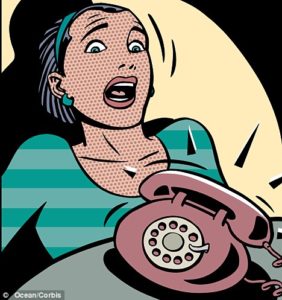
Don’t use this as a cop out though – many people are a bit reluctant initially but can quickly gain confidence after giving it a go. Because the rewards of phoning are so much greater, it’s well worth persevering.
The proven sales technique that works a treat in quote follow up
Salespeople are taught to “assume the sale”. That is, to always act as though they’re going to get the job or business.
The idea is if you lead the conversation adopting an assumptive approach, people will tend to go along with you and you’ll more or less automatically end up with the sale.
I don’t know to what extent you’ll be able to lead your client into accepting your quote or placing future business with you, but I do see real value in an assumptive mindset for quote follow up.
If you start from the perspective that:
– you’re an expert in your field
– you’ll do an excellent job
– you’ll also give excellent service
– therefore you’re as a good a choice as anyone for the client (and better than many),
Then you’ll naturally present yourself as:
– confident in your and your company’s abilities
– used to being successful with quotes / winning new business
The value in that is people want to deal with people who are confident, positive and successful. Not people who are tentative or unsure of themselves. Ie, your client is going to automatically (subconsciously) be more inclined to want to work with you.
Perceptions count
Confident people are also more likely to be perceived as competent. Put another way, if you’re hesitant, that could be taken as either you don’t know your stuff or you’re not that good at what you do. Your confidence will help convince your client you’ll do excellent work.
And positive people are also perceived as being easy to deal with – they don’t create problems and can ride with changes. Again, clients want business relationships that’ll be plain sailing.
These things can be pretty subtle, but I suspect are much more influential than we generally give them credit for. I’m sure adopting this approach will lead to greater success.
So, what does this mean in practice?
Well, rather than saying:
I was wondering if you’ve made a decision?
Can you tell me if we’ve been successful with this?
You might instead say:
Are you ready for us to go ahead with this?
Is there anything else you need from us before we go ahead with this?
If you’re happy for us to go ahead, we can get the job underway today. How does that sound?
The time frame is fairly tight on this project, so we’d like to start as soon as possible. Are you able to confirm?
I’ve made time for this project for tomorrow and the day after, and can deliver it to you on Friday. Does that work for you?
We’re fairly busy at the moment, but I’ve checked and we can fit it in OK. Would delivery on Monday be OK, or do you need it on Friday?
We can give you a pdf of the final translation as well as a Word file if you like. Shall we do that?
We’d love the opportunity to show you the quality of our translations on this project. Are you ready to give our company a try?
We can get this under way now if you like, and you can send through the purchase order when it suits.
This project is right in our field of expertise and our people will do an excellent job. Shall I get them under way?
Sample quote follow up e-mails
OK, sometimes phoning just won’t work or be so appropriate, so here are 2 quote follow up e-mails you can use as templates and adapt as necessary.
For before a decision will have been made
Dear XX.
I’m just following up on the quote we sent you yesterday and wanted to confirm we’ve provided all the information you need.
Please let me know if there is anything you’d like us to clarify, or anything further we should send through.
As you know, we have considerable experience in this area and you can have confidence our work will be of the highest quality. Our staff are looking forward to the project, and are able to get it under way just as soon as you’re ready.
Are you in a position to give the go ahead?
Kind regards,
The third paragraph should indicate why you’re the ideal person/company for the project and/or contain an assumptive close.
Here are some examples of other possible wording:
As I’m sure you’re aware, the time frame on the project is fairly tight and we’d ideally like to make a start as soon as possible.
Our staff have had an initial look at the project and it has been pencilled in for later this week. They’re looking forward to it.
This is a very interesting and appealing project and we’d love the opportunity to demonstrate the quality of our work and level of service we can provide. We know we won’t disappoint you.
For after a decision has probably been made
Dear [name].
We were wondering if a decision has been made regarding the XX project we quoted recently? I‘ve attached a copy of our quote for your reference.
Please let us know if there is anything else we can help you with for this project or if there is any further information we can provide.
If our quotation has been unsuccessful, we would value any feedback you can give us on the factors which influenced your decision – price, turnaround time, etc.
Thank you for your time.
Kind regards,
Conclusion
There is a great deal to be gained from savvy quote follow up.
By looking beyond the immediate job or project and viewing quote follow up as a tool to develop business relationships, it can be instrumental in gaining future work and valuable new clients.
Best results will come from
– favouring the phone over e-mail
– ideal timing
– adopting an “assumptive” mindset.
Effective quote follow up is not a difficult art – any practitioner or company should be able to do it effectively. The opportunity lies in that so few do, so it is a relatively easy way of gaining a genuine competitive advantage.
We’ve got great tips for your website, cv, setting your rates, dealing with agencies and a whole lot more.
See them all on our translator tips and resources page.
Or start with one of these:
Companion post: The secrets to crafting successful translation quotes
13 proven strategies for getting more freelance translation work from agencies
The easy way to get great client testimonials

